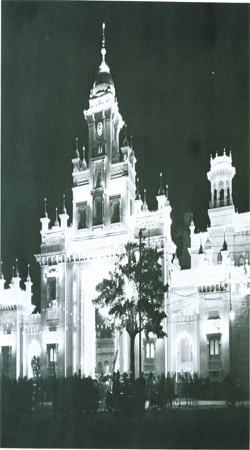|
 Beyond the Lad Bazar to the south-east is the enormous enclosure of the Khilwat Mahal and a group of palaces built by successive Nizams. The total area of this complex of palaces is 2,90,000 square yards. Included in this area is the Chow Mahalla palace, the Khilwat Mubarak, Rang Mahal, Roshan Bangla, Afzal Mahal, Tahniat Mahal, Chandni Begum-ki-[-javelj, M anj Ii Begum-ki-H aveli, Bakshi Begum-kj-Havejj Moti Bangla, Shadi Khana, Tosha Khana, etc.
Beyond the Lad Bazar to the south-east is the enormous enclosure of the Khilwat Mahal and a group of palaces built by successive Nizams. The total area of this complex of palaces is 2,90,000 square yards. Included in this area is the Chow Mahalla palace, the Khilwat Mubarak, Rang Mahal, Roshan Bangla, Afzal Mahal, Tahniat Mahal, Chandni Begum-ki-[-javelj, M anj Ii Begum-ki-H aveli, Bakshi Begum-kj-Havejj Moti Bangla, Shadi Khana, Tosha Khana, etc.
The Chow Mahalla was built in 1750 by the Nizam, Salabat Jung. The palace is a copy of the Shah’s palace at Tehran, although considerably finer in architectural construction than the latter. This was a group of four palaces, and each was used for a specific purpose.
The one to the north was the Durbar Hall, where the Nizams held State Receptions. It was here that the British Viceroys were entertained. The Ministers and other dignitaries of the State were received in the palace to the south, while the offices of the Nizam’s personal estate were in the eastern building.
The splendour of days gone by can be felt in this vast complex, where
royalty and taste went hand in hand.
“The main quadrangle has a beautiful garden surrounding a large marble cistern, the fountains and splashing waters of which in moonlit nights have been compared by a visitor with one of the enchanted gardens described in the “Arabian Nights”. To the north of the cistern is the grand Darbar Hall where His Highness holds State receptions and receives official notables.”
|
|